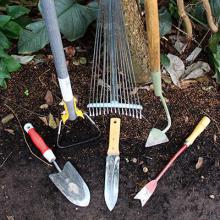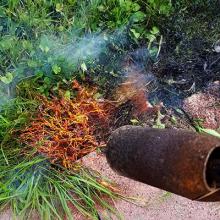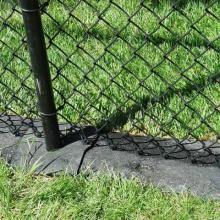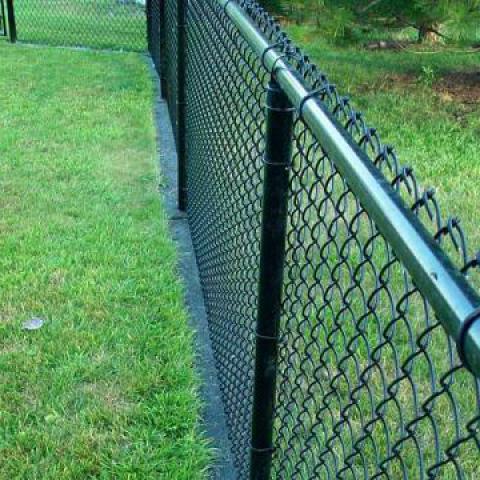
Fences are featured heavily in many school and residential landscapes. Weeds along fence lines need to be managed to minimize and/or prevent:
- Seed rain from annual and biennial weeds.
- The spread of vegetatively reproducing structures of perennial weeds.
- The establishment of vining weeds.
Control Options Details
Mechanical Control
Weeding along fence lines is difficult because weeds are protected by the fence. In this environment, traditional mechanical weed control methods such as hand pulling and hoeing are very labor intensive and unsuccessful. Though trimming along fences is often more successful, repeated trimming is more effective at reducing and managing weeds in this area. String trimmers are commonly used to control weeds along fences, but should be operated carefully to avoid fence damage.
Mowing is an effective way to limit weed growth, prevent seed rain, and weaken perennial weeds; however, mowers are unable to cut grass and weeds directly under and adjacent to fences.
Raising fences can be a good way to extend the reach of mowers. This can be used, in conjunction with certain mower attachments, to mow under fence lines and around fence posts. Several companies offer attachments suited for mowing along and under fences. Some feature swing-away designs which allows the user to cut grass and weeds tightly around posts.
Barriers
Mow strips are weed barriers under fences that prevent weeds from growing under fences and around fence posts. They typically extend a few inches from the fence on each side and are flush with the ground. Mow strips allow a mower to completely reach fence line weeds and eliminate the need for trimming along fences. These weed barriers can be made of several materials including:
- Plastic
- Rubber
- Bricks
- Pavers
- Concrete
These materials vary in price and efficacy. Several of these options can be installed if a fence is already present. A cement mow strip can be a very effective was to prevent weeds under fences. But it is expensive and should be done prior to fence installation.
Thermal Weeding
Flame weeding can be effective at controlling weeds along fence lines and is most effective when repeated. This method is most effective against annual broadleaf weeds, but can control perennials with repeated applications. It should not be used along fences made of flammable materials such as wood or plastic.
For instructions and tips for flame weeding, please visit the Thermal Weeding page under Pesticide-free Control Options.





